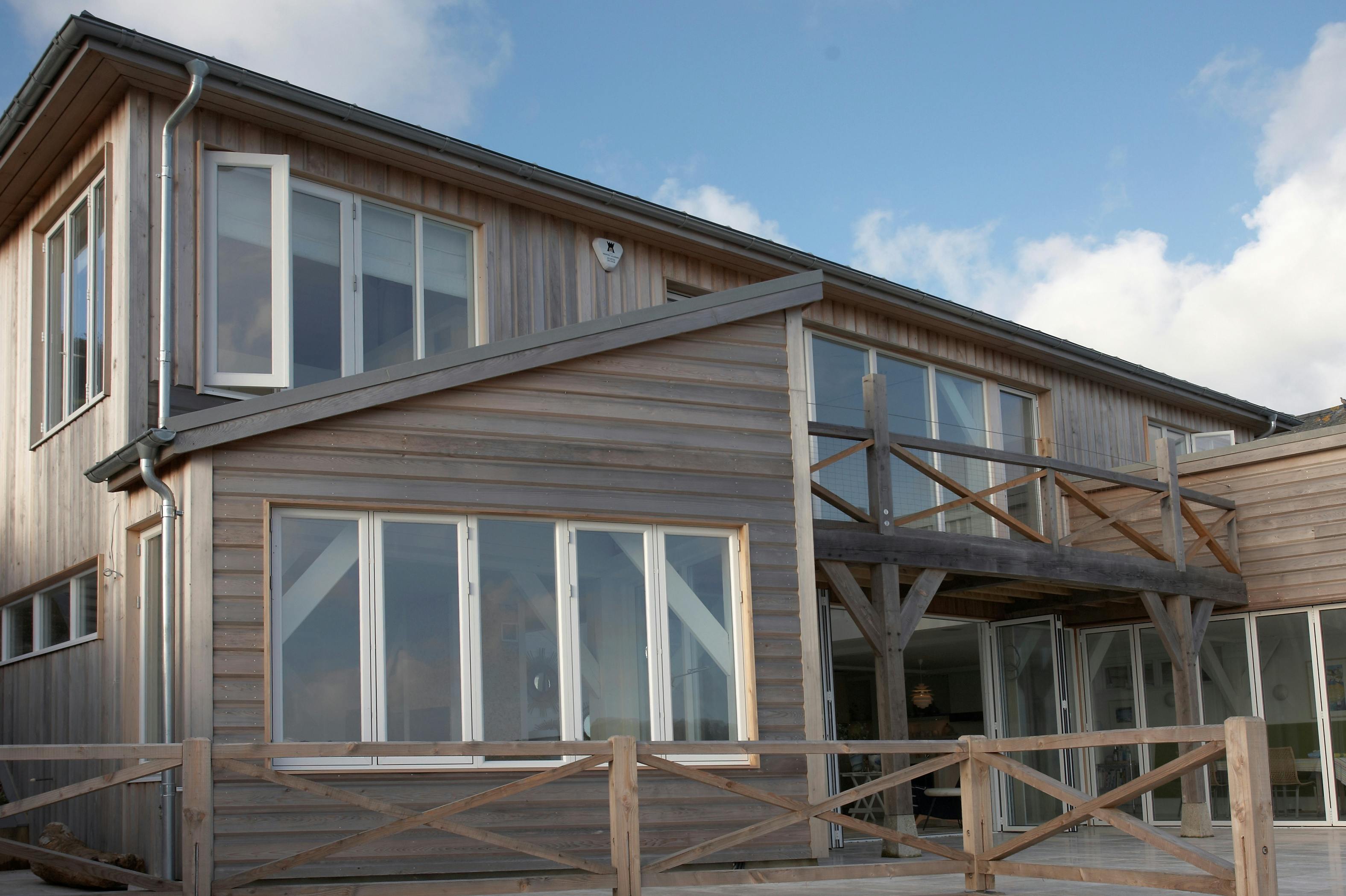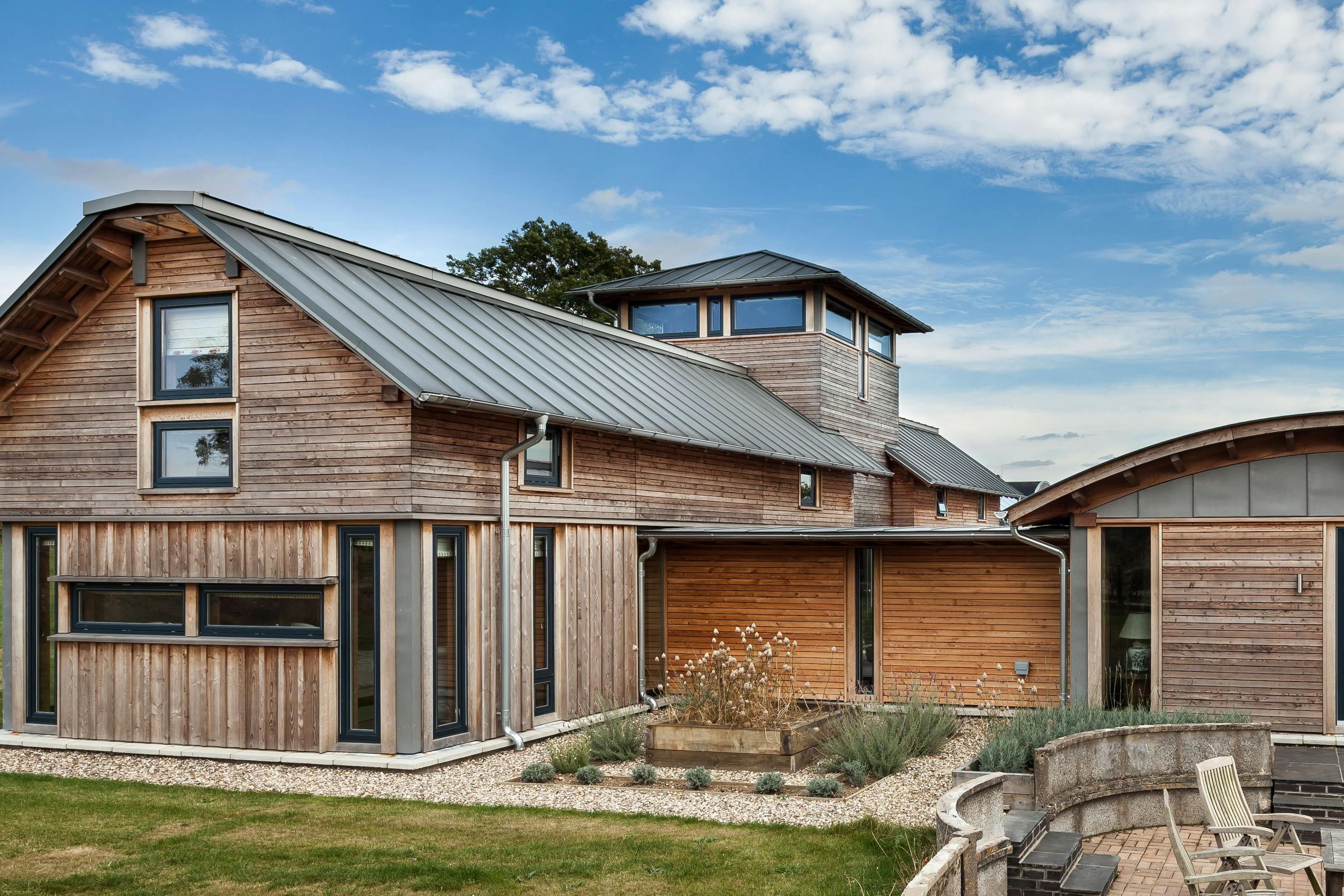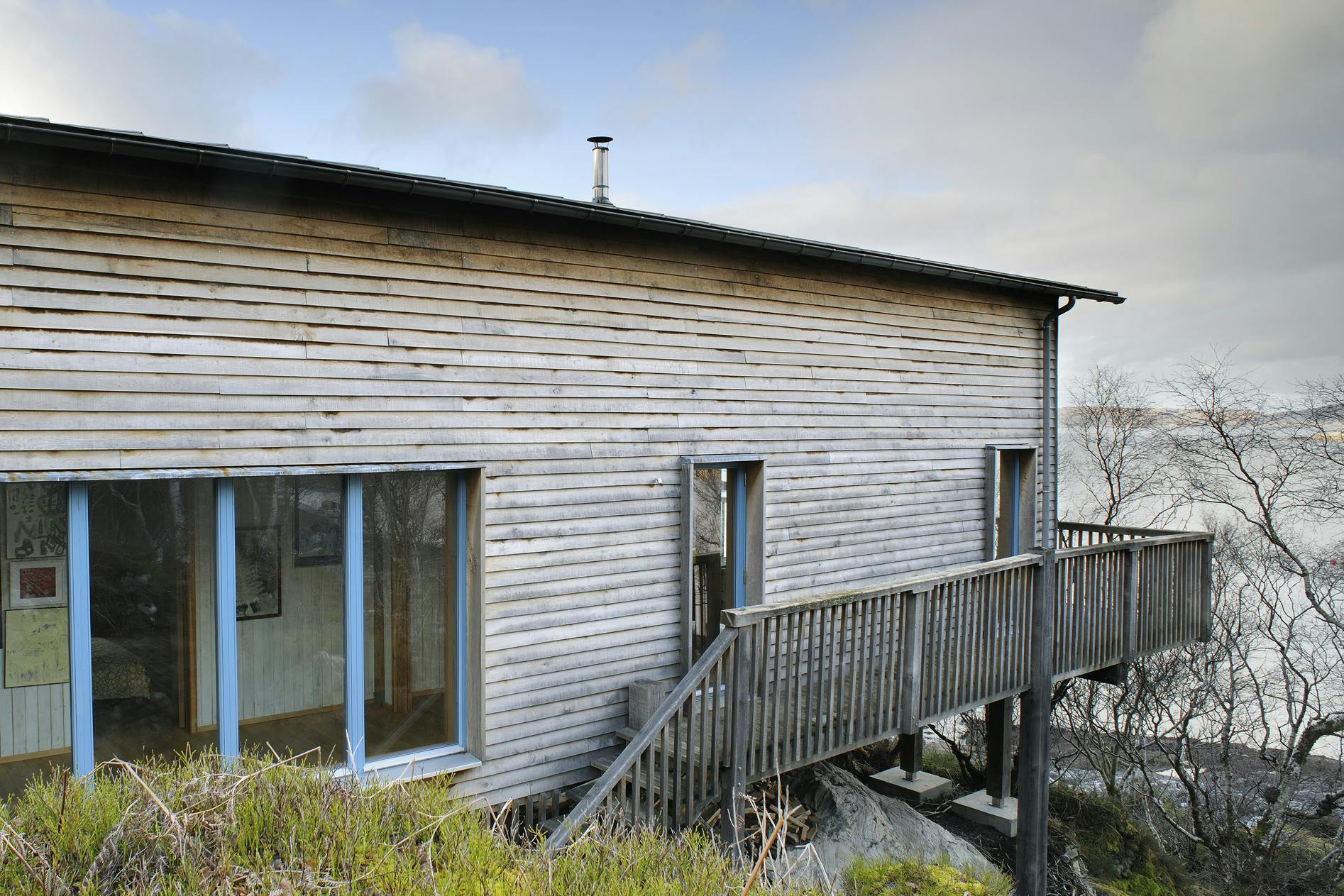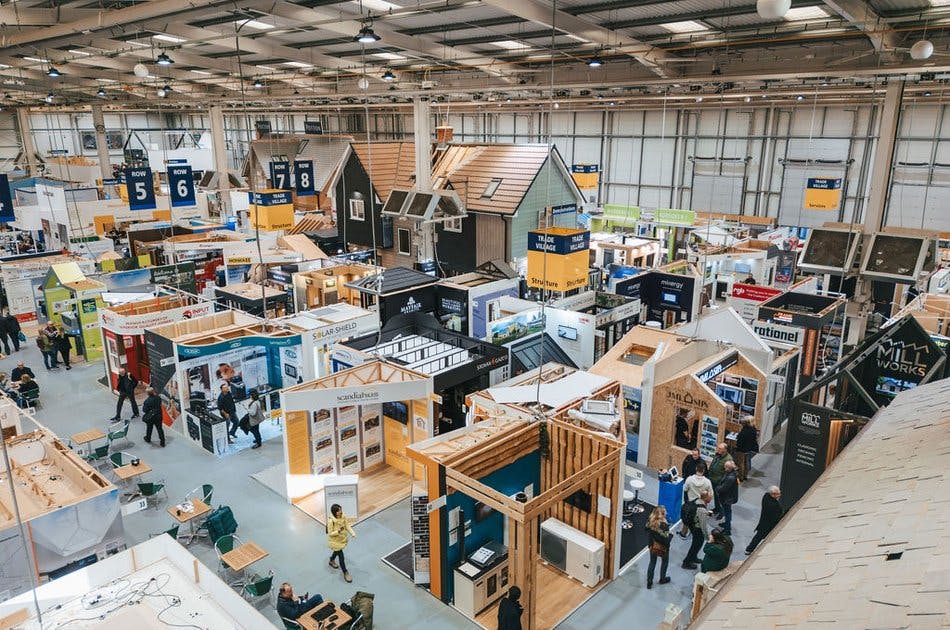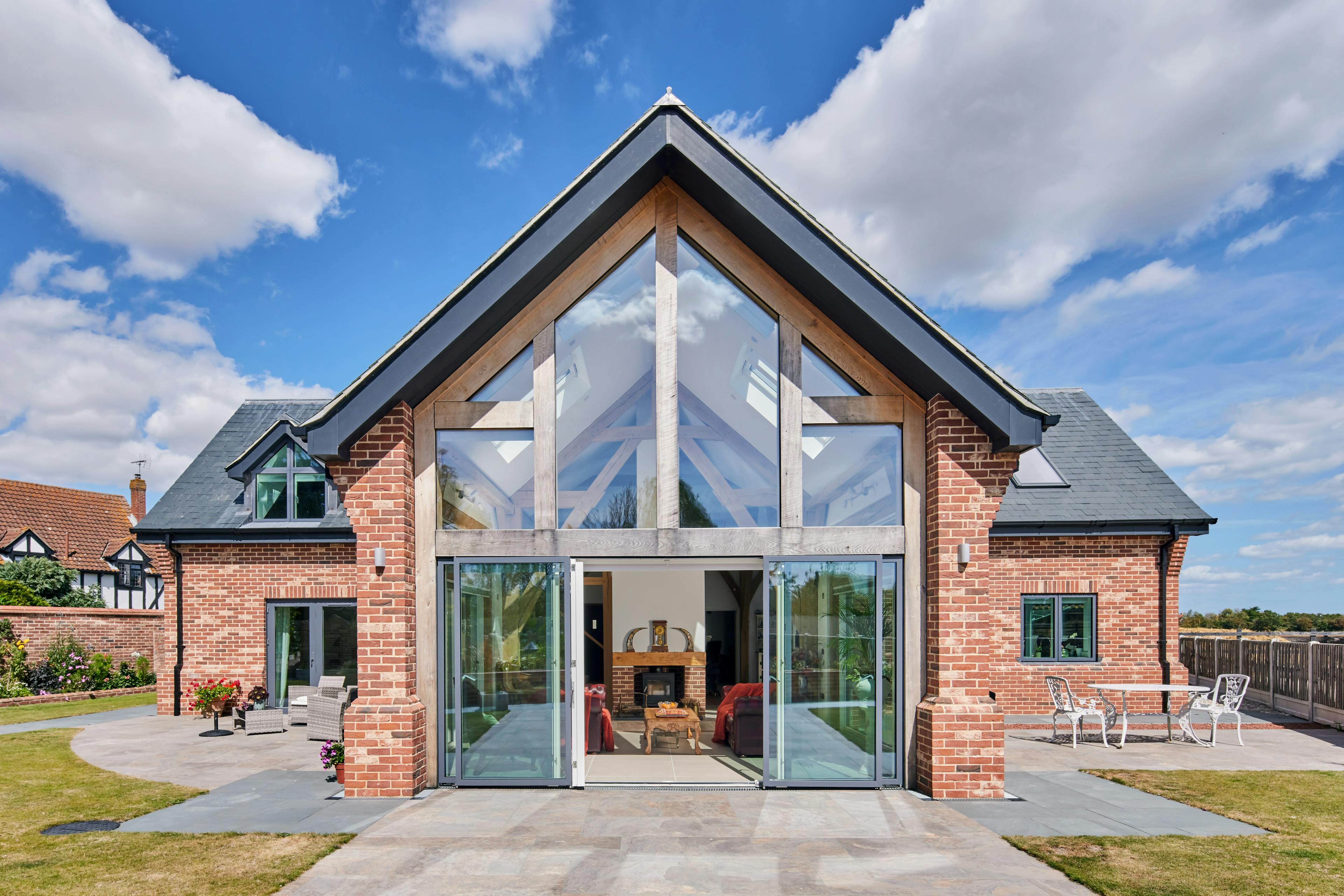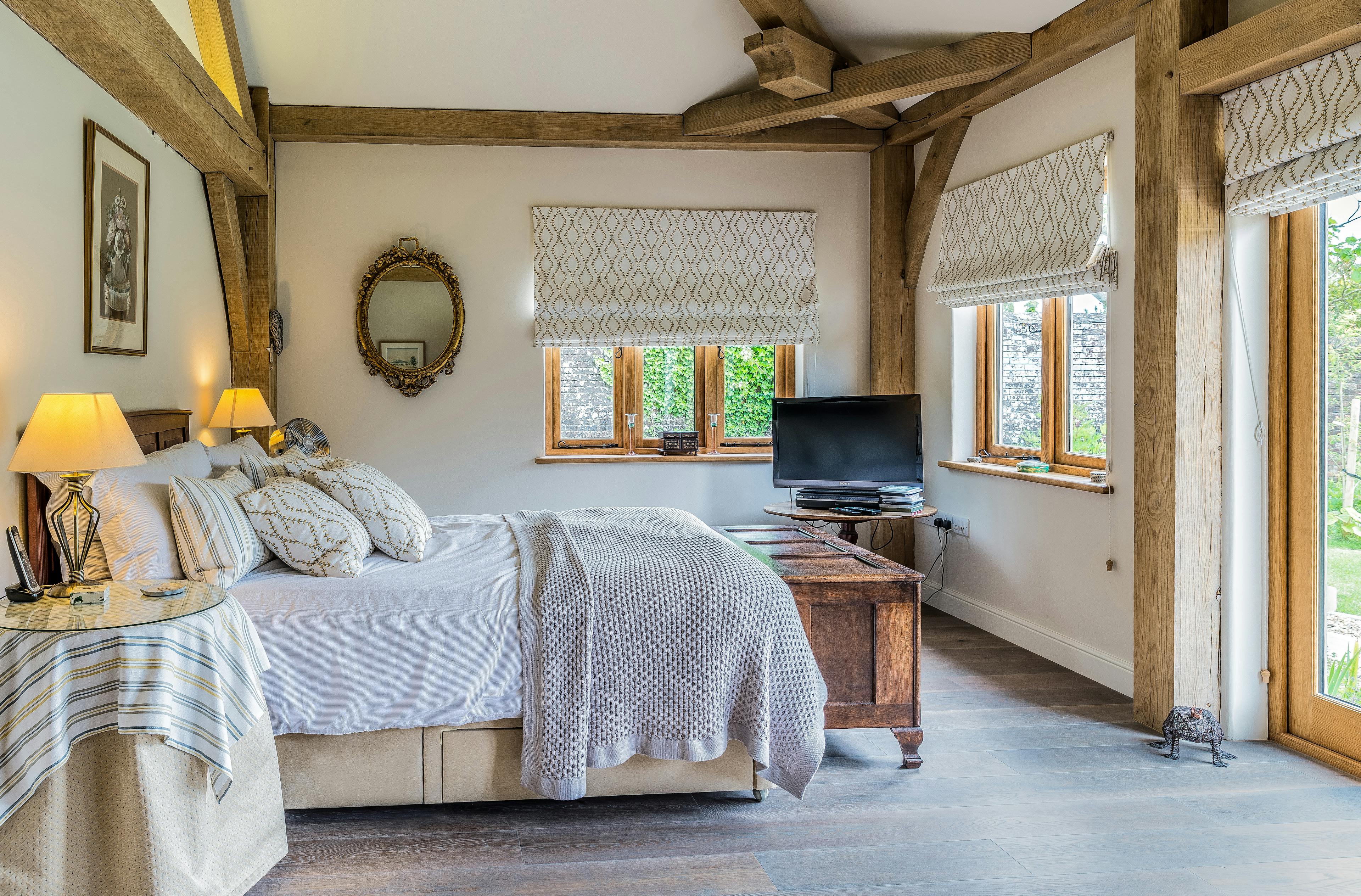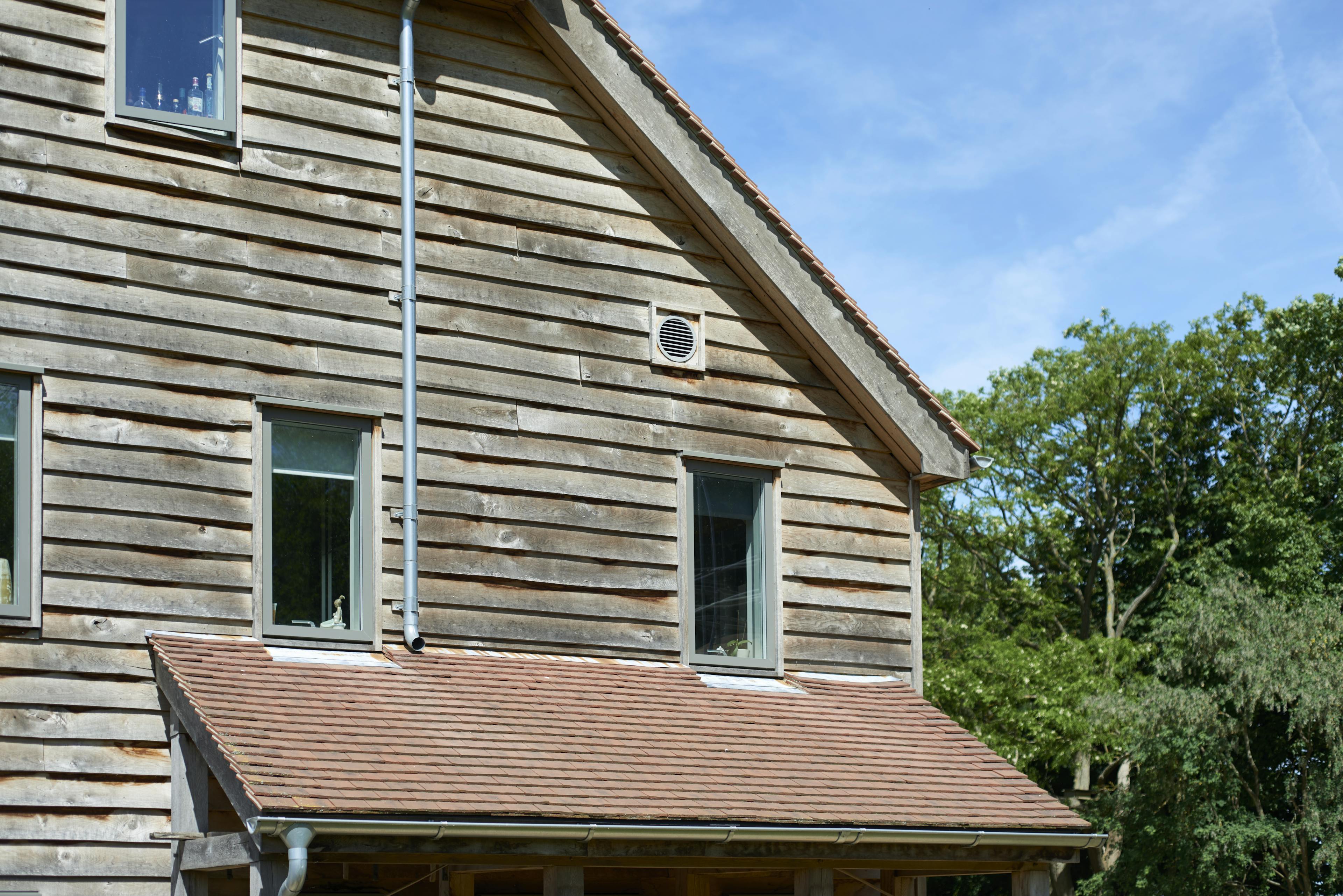Weatherboarding (cladding)
11.09.2024
2 minute read
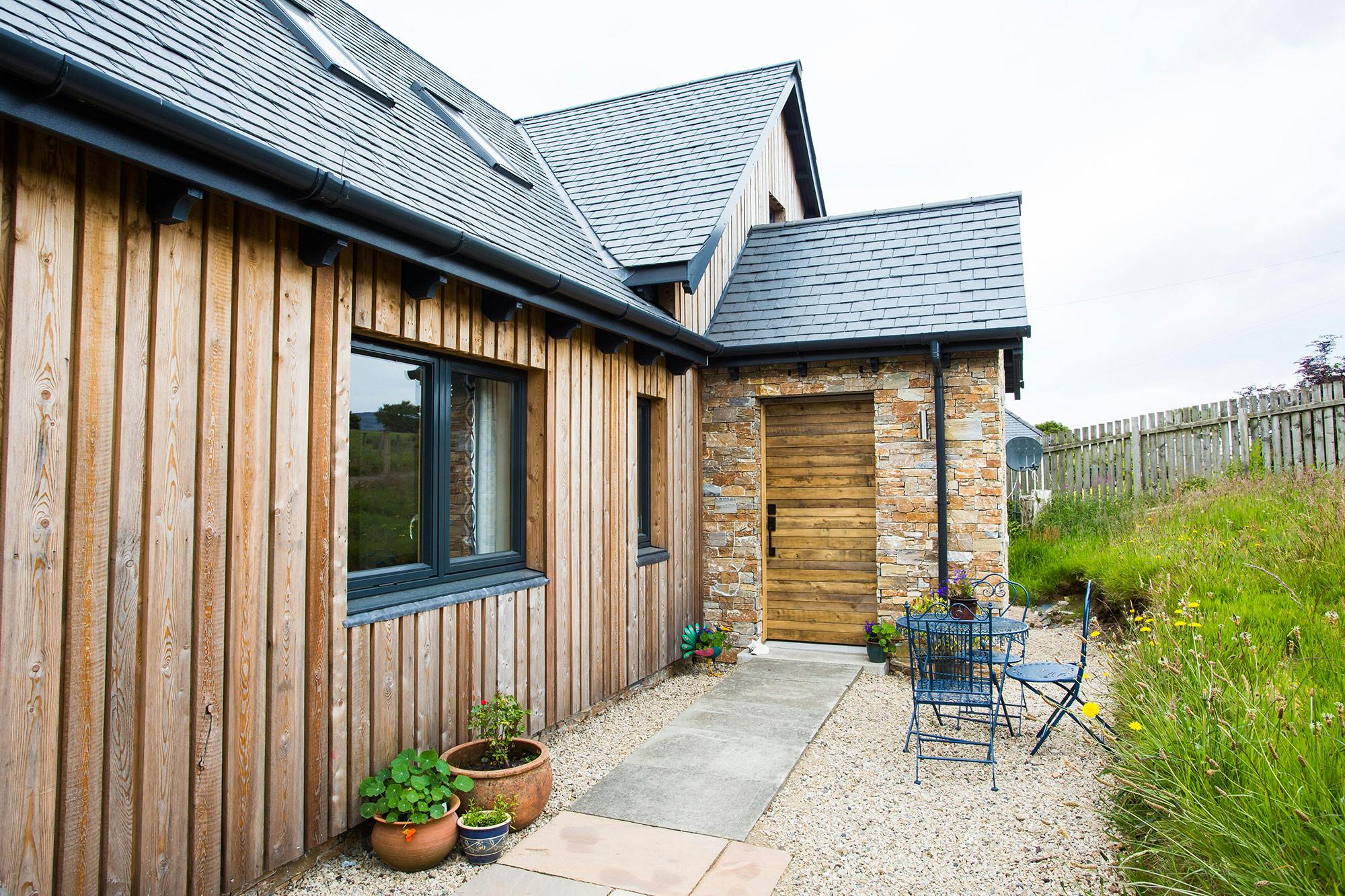
Cedar, larch and oak weatherboarding
Weatherboarding (also referred to as cladding) is a great way to enhance a timber frame, offering a variety of materials, profiles, and finishes to suit different styles. While aesthetics are often the primary consideration, factors like cost, durability, and installation also play a role.
On extensions, weatherboarding can create an appealing contrast with the main house, breaking up large surfaces - something planners often appreciate. It can achieve traditional, rustic, or contemporary looks. Over time, untreated timber naturally weathers to a silvery tone, regardless of its original colour.
Carpenter Oak typically uses rough sawn, fresh timber such as oak, larch, and Western Red Cedar, known for their durability. Oak and cedar are the most long-lasting, but thicker boards provide greater stability and resilience. Fresh sawn boards are more affordable than machined timber and offer a simple, classic look. Their slight variations create a relaxed, timeless appearance, blending seamlessly into the landscape within a year.
Painted weatherboarding has a rich history and suits many environments. Machined boards, which are pre-dried, take paint more easily and come in various profiles. Fresh sawn boards require a few months of drying before painting. While machined boards are more expensive, they offer stability, uniformity, and easier installation.
Newer options like ‘Thermowood’ provide enhanced stability, insulation, and resistance to insects and rot. This heat-treated wood, perfected in Finland in the 1990s, undergoes a process that changes its cellular structure, making it extremely durable. The dark, rich appearance of heat-treated wood is ideal for modern architectural designs and is available in species like ash, poplar, and Scandinavian redwoods.
Fixings
We would advise the use of stainless fixings wherever possible. These are more expensive than some other options but offer the best durability in an external situation.
Screws provide the best hold, though nails are also common. Fixings can be visible or countersunk for a flush finish.
Lapped boards can be ‘secret nailed’ to hide fixings, while specialized clip systems offer a clean look, faster installation, and easy board removal for future modifications or service access.
Weatherboarding is a decorative finish, not the primary weather barrier. A full build-up beneath the boards ensures insulation, airtightness, and water protection to meet Building Regulations.
Oak weatherboarding is typically installed later in the construction process by your builder.
We are happy to pass on details of sawmills and suppliers. Contact us for more information.
We can offer to include Cedar, Larch & Oak weatherboarding into our package; this is most suitable when the project is local to one of our yards. This option can be considered on smaller projects and is appropriate for uninsulated outbuildings and garages where we fit the weatherboarding at the same time as the frame raising.
Contact us for more details.
Planning a similar build?
Get in touch with our specialist team
Get in touch
